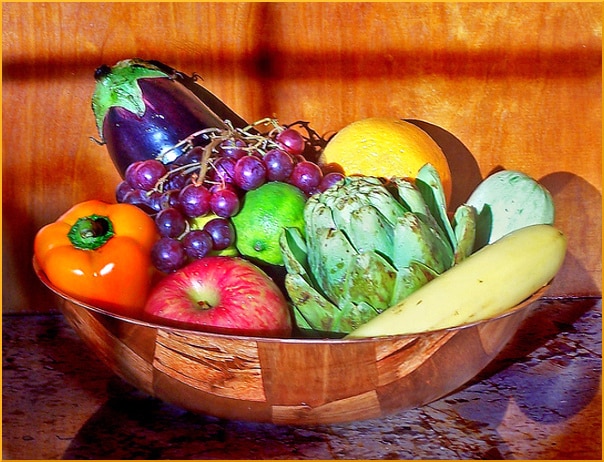
This post belongs to a compendium of hints and tips for parents that has spilled out of Childhood Obesity Awareness month into October. There are some things that everybody has heard a million times. Vegetables good; raw ones better. Fruit good; fruit juice bad. Whole grains good; grains in general, not so much.
There are things everyone has heard a million times that turn out to be no longer true, like the villainy of eggs. Like it or not, and strange as it may seem, the science of nutrition is constantly in flux.
Exploring the world of processed food labels, and even the tags on fresh produce, can be a productive family activity, especially if the kids aspire to be detectives. (Seriously, bring a magnifying glass.) Make a project of deciphering nutritional information, and all the different terminology behind which sugar and chemicals are hidden. How do we know if the veggies are truly organic? Does the grower conform to environmentally responsible best practices?
Other facets of factuality
How does unit pricing work, and can the consumer really save money by paying attention to it? A child’s willingness to consider these matters might cause astonishment. Once the mental connection is made between disposable income and a new bike, a child can become surprisingly interested in thrifty shopping.
What do the manufacturers mean by a “serving“? (Hint: The answer may turn out to be quite different from what you assume.) Health writer Maria Trimarchi gives an example:
Glancing at the calories in a 20-ounce bottle of Coca-Cola, you’ll see 100 calories. What your kids might miss, though, is that it’s 100 calories per serving, and there are 2.5 servings in that bottle. Drink the whole thing, and you’ve consumed 250 calories.
In the realm of labels, this bit of folk wisdom has been expressed by many people in many different ways: If you can’t pronounce the name of the ingredient, don’t eat the product.
Certified personal trainer Paul O’Brien likes health games, and speaks of “food and mood” charts, a learning aid that help families to figure things out. Here is his rationale:
This encourages children to recognize the association between what they eat and how they feel. You can make it a family game by designing your own charts and rules and discuss your progress at your monthly family meeting.
To enhance the shopping experience, a government website suggests encouraging little kids take along small pieces of construction paper to the market, and choose fruits and vegetables to match — yellow squash, purple cabbage, red peppers, and so on.
As always, not every idea works for every family, but they are worth seeking out. And of course no idea can ever be effective if it remains untried.
Your responses and feedback are welcome!
Source: “Big Kids: 10 Things Parents Can Do to Fight Childhood Obesity,” HowStuffWorks.com
Source: “Home is the childhood obesity battleground,” MayoNews.ie, 10/10/17
Photo credit: Trace Nietert on Visualhunt/CC BY

 FAQs and Media Requests:
FAQs and Media Requests: 











